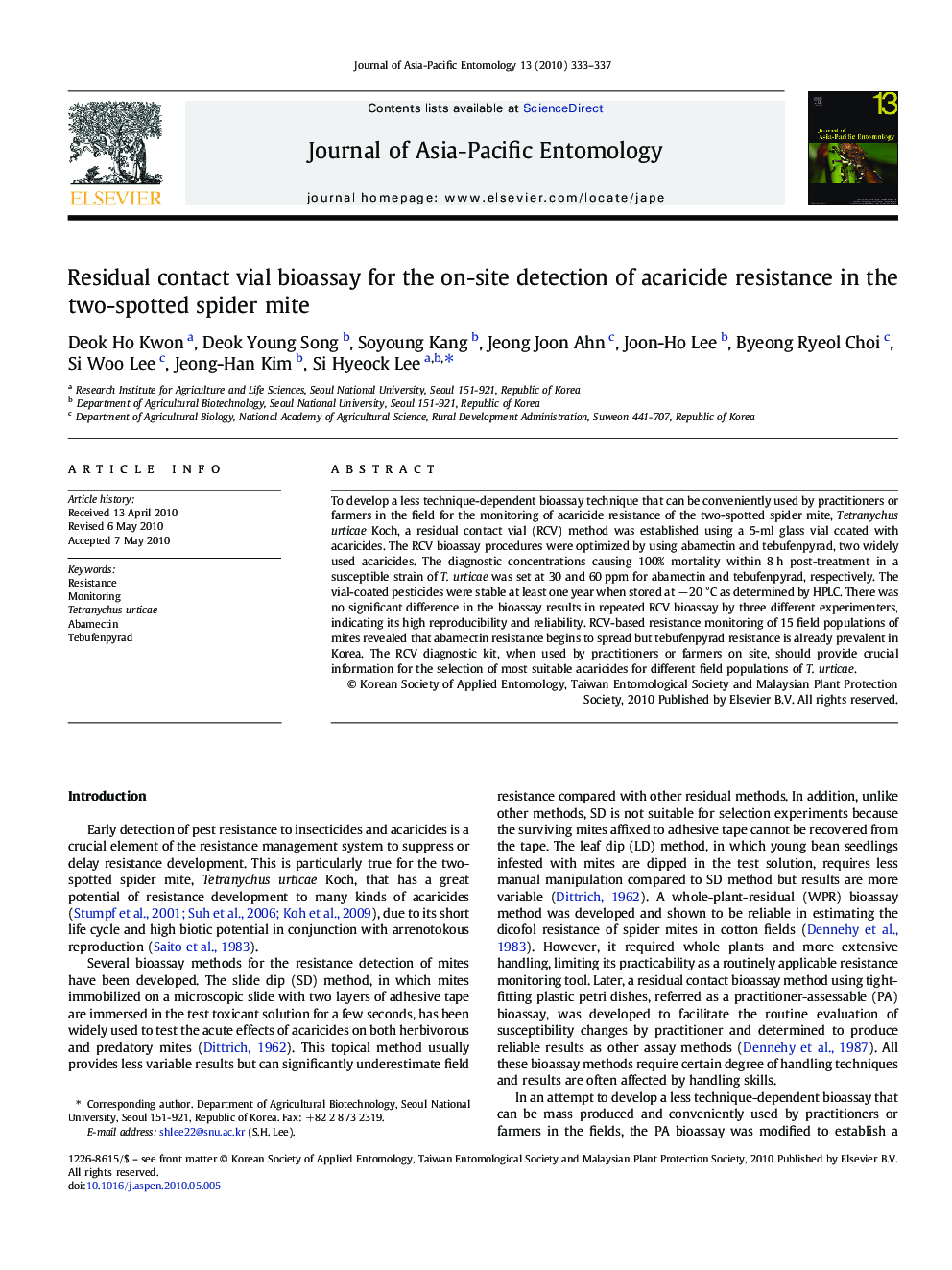| کد مقاله | کد نشریه | سال انتشار | مقاله انگلیسی | نسخه تمام متن |
|---|---|---|---|---|
| 4524827 | 1323594 | 2010 | 5 صفحه PDF | دانلود رایگان |

To develop a less technique-dependent bioassay technique that can be conveniently used by practitioners or farmers in the field for the monitoring of acaricide resistance of the two-spotted spider mite, Tetranychus urticae Koch, a residual contact vial (RCV) method was established using a 5-ml glass vial coated with acaricides. The RCV bioassay procedures were optimized by using abamectin and tebufenpyrad, two widely used acaricides. The diagnostic concentrations causing 100% mortality within 8 h post-treatment in a susceptible strain of T. urticae was set at 30 and 60 ppm for abamectin and tebufenpyrad, respectively. The vial-coated pesticides were stable at least one year when stored at − 20 °C as determined by HPLC. There was no significant difference in the bioassay results in repeated RCV bioassay by three different experimenters, indicating its high reproducibility and reliability. RCV-based resistance monitoring of 15 field populations of mites revealed that abamectin resistance begins to spread but tebufenpyrad resistance is already prevalent in Korea. The RCV diagnostic kit, when used by practitioners or farmers on site, should provide crucial information for the selection of most suitable acaricides for different field populations of T. urticae.
Journal: Journal of Asia-Pacific Entomology - Volume 13, Issue 4, December 2010, Pages 333–337